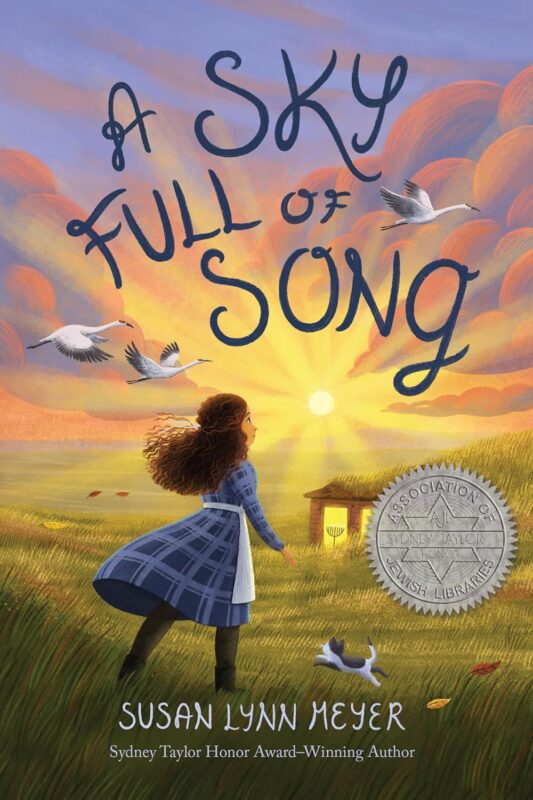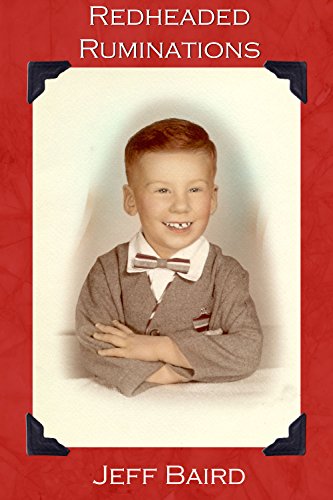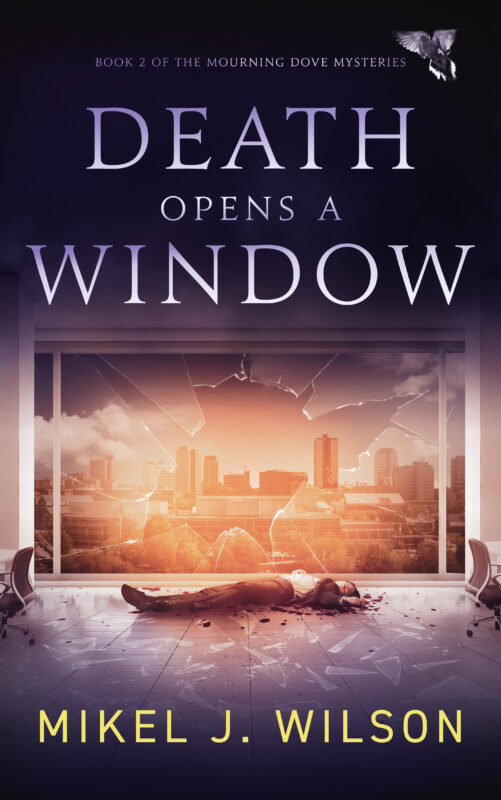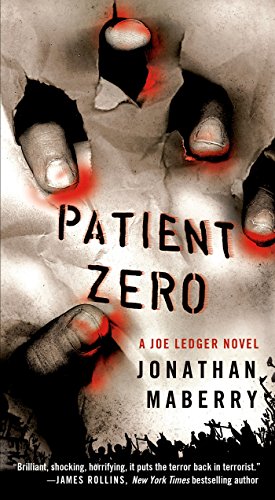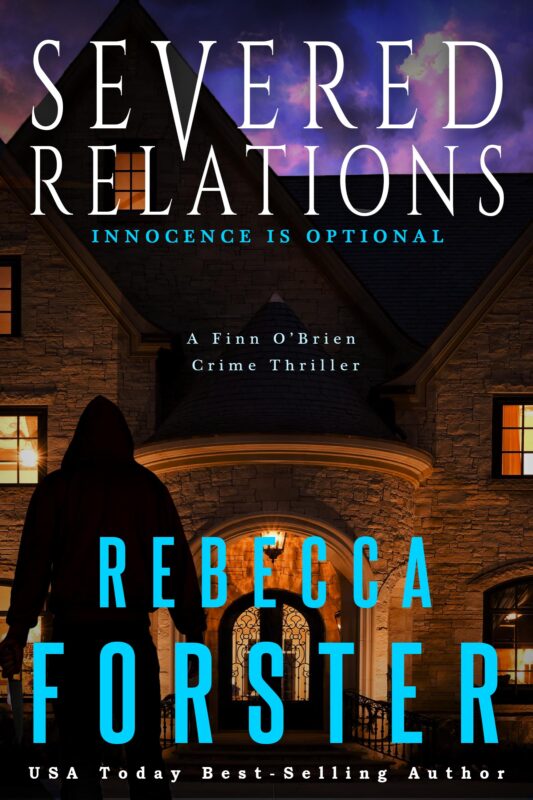“Going the Distance: Goal Setting and Time Management for the Writer” with Kitty Bucholtz
December 26, 2011 by A Slice of Orange in category Archives tagged as Online ClassEnrollment Information at http://www.occrwa.org/onlineclassJan12.html
COST: $20 for OCC members, $30 for non-members
If you have specific questions, email occrwaonlineclass@yahoo.com
ABOUT THE CLASS:
Back by popular demand!
If you missed this class last year – or need a refresher – “Goal Setting and Time Management for the Writer†offers everything you need to make 2012 a banner year for achieving your writing and personal goals.
Kick-start the year with a personalized approach that works for you. Use these tools throughout the year and build your confidence knowing you CAN reach your goals. It doesn’t matter if you are a plotter or a panster, this interactive class helps you design a plan for the year and gives you the tools to know how and when to make adjustments.
ABOUT THE INSTRUCTOR:
Kitty Bucholtz, author of Little Miss Lovesick, combined her business background and a MA in Creative Writing to build a career – and she wants to help you do the same. She is also the co-founder of Routines for Writers where she blogs every Wednesday.
Enrollment Information at http://www.occrwa.org/onlineclassJan12.html
COST: $20 for OCC members, $30 for non-members
Coming in February 2012:
Kiss Me or Kill Me: Writing Cozy Mysteries 101 for Romance Writers with Linda O. Johnston
Discover the similarities and the differences between romances and cozies, and learn how the best cozy mysteries use the suspense of romance to further a series’ development.
Check out our full list of workshop at http://www.occrwa.org/onlineclasses.html
Want to be notified personally two weeks before each class? Be sure you’re signed up for our Online Class Notices Yahoo Group! Sign up at the bottom of http://www.occrwa.org/onlineclasses.html or send a blank email to OCCRWAOnlineClassNotices-subscribe@yahoogroups.com
********** permission to forward **********
0 0 Read moreThe Santa Shop Entertains & Inspires
December 15, 2011 by A Slice of Orange in category Archives tagged as Christmas, Inspirational fiction, writing craftThis morning (Sunday) I was supposed to work on my new book – the one I intend to complete for a December release. Instead, I snuggled down in my warm bed and finished an e-book called The Santa Shop (The Santa Conspiracy) by Tim Greaton.
So, on this chilly Sunday morning, I want to thank Tim Greaton for reminding me of the very simple lessons to creating a good book:
1) Have a story, not an idea.
2) Know your character, not just his or her name.
3) Write as if you are pointing the way not giving directions.
4) Stop when the story is told.
Thanks, Tim, for the gift of The Santa Shop.
0 0 Read more
KINDNESS BY THE GALLON
December 13, 2011 by Marianne H. Donley in category Archives tagged as Bobbie Cimo, Eye on Hollywood
The other morning while on the freeway driving to work, my cell phone rang. Normally, I won’t answer it without using my Bluetooth. But sometimes the contraption creates more trouble than it’s worth–it always ends up messing up my phone connection.
Nobody ever calls me early in the morning, unless there’s an emergency or it’s a wrong number. Because my curiosity got the best of me, I picked up the phone.
It wasn’t an emergency, just my co-worker calling me to let me know that the Shell station, down the block from where we work, was giving away free gasoline. She promised it wasn’t a joke and the lines were moving fast.
When I arrived at the gas station, there didn’t seem to be much of a commotion going on, so I was sure she had gotten her facts wrong. But when I tried to pull into the driveway, it was blocked off. A nearby attendant, directing traffic, indicated to me that I should go around and enter from the other side.
After taking a shortcut through the parking lot of my friendly bank branch, next door, I ended up at what I thought was the end of the line…only to find I had accidentally cut ahead of a dozen or so other cars that were already there. Can you say the word “riot� Well, luckily there wasn’t any, just another guy directing traffic, and telling me I had to go around again, only this time not to use my shortcut.
As he was talking to me, an angry young man who had apparently made the same mistake I did, was also being told he also had to go around again. Only this guy a wasn’t taking it well. He stepped on his gas peddle and went barreling out and almost collided into me.
My first instinct was to slam on my horn with one hand and to give him some unlady-like gesture with my other hand. It was a good thing that I didn‘t. Because who do you think was in front of me, the second time that I went around? Mr. Cool, himself.
But my friend was right, the lines did move fast and the offer for free gas was for real. After pulling up to the pump, I got out of my car but was quickly told it wasn’t necessary. They would fill up my tank for me. I could feel a lump forming in my throat. Somebody was serving me? And what’s more, they seemed happy to be doing it.
I was told that the limit for each fill-up was $20.00. But if one needed to, they could go around for a second time. I was good at $19.67
Just as I was about to pull away, a young lady with a welcoming smile came up to my window and handed me a free bottle of water. “Have a nice dayâ€, she said cheerfully. Without any warning, my eyes welled up with tears, and all I could do was choke out a weak “Thank youâ€.
This act of kindness with no strings attached, was hard to believe. But it was true. So sometimes when things seem too good to be true…you’ve got to trust that they are and go with it.
I later learned that the reason for the free give-away was to promote an upcoming episode of the TV show called “Gold Rush†that airs on the “Discovery Channelâ€. But regardless, it didn’t take away the fact that it made my day. Not to mention brought back memories of when we use to get service with a smile.
A Naughty Christmas Carol by Jina Bacarr
December 11, 2011 by A Slice of Orange in category Archives tagged as Amazon, Christmas, Christmas Carol, Christmas eve, holiday, Kindle, naughty, romance', Scrooge, videos, Wall StreetWhat if Scrooge was a sexy hunk?
I couldn’t resist writing about this modern day Scrooge in my holiday novella, A Naughty Christmas Carol.
Three sexy female ghosts try to save the soul of a Wall Street trader on this naughty Christmas Eve.
Nick Radnor is a Wall Street trader with no heart.
Money is his mistress.
That doesn’t stop him from having sex in his office on Christmas Eve with his secretary, Jinger Hunt.
Or keeping his beautiful fiancée, Monique Ashford, dangling on a string. He’s relentless in his pursuit of wealth and power. Wall Street is in his blood, along with the thrill of risking it all, but he can’t forget the painful memories of Christmas when he was a kid.
Nick works hard, but plays harder in a gentlemen’s club called Mamie’s. After a wild Christmas Eve at Mamie’s, Nick is in a drunken stupor when he hears the eerie sound of rattling chains proclaiming the arrival of the tormented ghost of Charlie Harris, his dead partner.
The last thing Nick needs is Charlie’s ghost telling him he is doomed to walk the earth for eternity, chained by his sins.
What’s even more disturbing to Nick is the arrival of three sexy female ghosts, who warn him that if he doesn’t change his ways he will lose it all, including Monique, the woman he loves.
On this naughty Christmas Eve, Nick will learn the terrifying full scope of where his life is headed because of his corporate greed. In a peek into the future that will shatter his every expectation, Nick realizes the choices he makes now will have deadly consequences for everyone he loves.
Check out A Naughty Christmas Carol on Amazon Kindle.
Happy Holidays, everyone!
Jina
0 0 Read moreA Funny Thing Happened on the Way to Getting Published
December 9, 2011 by A Slice of Orange in category Archives tagged as It's Worth ItI posted this last week on Dark Side Down Under, a blog I belong to in Australia with lots of paranormal writers. I wanted to share it with my OCC friends, too. 🙂
When it comes to romantic comedies, I don’t know if I loved them and so saw my life as one, or if my crazy adventures with John have spurred on a love of the same in fiction. In any case, my first novel, Little Miss Lovesick, certainly has aspects of art imitating life. The heroine Sydney (named long before I dreamed of visiting Australia) wants nothing more than a lifetime of true love. When things don’t work out, she’s determined to do whatever it takes to fix the situation, but every attempt seems to only create more problems.
Oh my gosh, that was so me! After a short but disastrous stint trying to find meaning for my life as a U.S. Marine, I went back to college and decided to forget a higher purpose. All I wanted now was a husband and a boring career. Safety. But the man I was determined to have (at age 19) was not interested in pursuing me. My roommate had his attention. My friend across the hall definitely caught his eye. But not me. No worries. I’d simply keep pursuing him until he realized what a great catch I was! And what lengths I went to!
If you’re laughing, you understand why I write romantic comedies. Even when I’m making things up about pretend people, I can’t help but pull from experiences in my real life. I love to laugh, and John and I both tend to do whatever it takes to make each other laugh. That flows into my writing as well. If you’ve ever seen John and me together, you know I’ve got a lot of material to work with! Some of that has been written into a series of romantic comedies scheduled for 2012 and 2013 set in a little lakeside town like the area where I grew up. The first one, Love at the Fluff N Fold, will be out in the spring. They’re sweet and funny like Little Miss Lovesick.
Later in 2013, I’ll begin releasing a series of superhero romantic comedies. The first book in the Adventures of Lewis and Clarke series is called From Zero to Hero. The idea began when I got tired of John ignoring me to play video games and read comic books. (Guess who has a growing collection of graphic novels now? I had no idea they were so good!)
I love writing these kinds of stories! My books always have a young woman who is searching for something and finds she has more power in her life, yet less control, than she realized. By the end of each story, she’s not only made her own life better, but others’ as well. It took me a few years to realize I write about these women because that’s what I want in my own life.
I guess I thought most women felt the same, so it was a surprise to find editors telling me (and my agent when I had one) that romantic comedies are hard to sell. That didn’t make sense to me since rom-com movies are a staple in the film industry. After hearing more agents and editors at the Romance Writers of America conference in New York this year tell me more of the same (“We don’t know how to sell/have good luck with romantic comedies.â€), I decided to go it on my own.
I knew self-publishing would be a long, hard road, but I was sure there was an audience out there who would enjoy my book. I was right on both counts. It’s been a slow and sometimes difficult process, but I’ve gotten great reviews. I’m writing from my heart and enjoying my work. And I’ve found the contentment I was looking for, knowing that I’m entertaining people. Right now, I’m working on getting Little Miss Lovesick into print. (Look for it on Amazon in a week or two!) The process is taxing my jet-lagged brain cells – LOL! – but I’m grateful to be on this path. Who knows? I might create a heroine who starts her own business despite the odds, surviving mayhem and facing disaster… Sounds fun to me!
 Kitty Bucholtz decided to combine her undergraduate degree in business, her years of experience in accounting and finance, and her graduate degree in creative writing to become a writer-turned-independent-publisher. Her first novel, Little Miss Lovesick, was released in September 2011 as an ebook and will be available in December in print format. Kitty has also written magazine articles, devotionals, and worked as a magazine editor. She is the co-founder of Routines for Writers where she blogs every Wednesday. Her next novel, Love at the Fluff N Fold, will be released in Spring 2012.
Kitty Bucholtz decided to combine her undergraduate degree in business, her years of experience in accounting and finance, and her graduate degree in creative writing to become a writer-turned-independent-publisher. Her first novel, Little Miss Lovesick, was released in September 2011 as an ebook and will be available in December in print format. Kitty has also written magazine articles, devotionals, and worked as a magazine editor. She is the co-founder of Routines for Writers where she blogs every Wednesday. Her next novel, Love at the Fluff N Fold, will be released in Spring 2012.
Affiliate Links
A Slice of Orange is an affiliate with some of the booksellers listed on this website, including Barnes & Nobel, Books A Million, iBooks, Kobo, and Smashwords. This means A Slice of Orange may earn a small advertising fee from sales made through the links used on this website. There are reminders of these affiliate links on the pages for individual books.
Search A Slice of Orange
Find a Column
Archives
Featured Books
PATIENT ZERO: A JOE LEDGER NOVEL
When you have to kill the same terrorist twice in one week there's either something wrong with your world or something wrong with your skills...
More info →SEVERED RELATIONS
Detective Finn O'Brien catches the call: two kids and their nanny are dead behind the gates of Freemont Place.
More info →Newsletter
Contributing Authors
Search A Slice of Orange
Find a Column
Archives
Authors in the Bookstore
- A. E. Decker
- A. J. Scudiere
- A.J. Sidransky
- Abby Collette
- Alanna Lucus
- Albert Marrin
- Alice Duncan
- Alina K. Field
- Alison Green Myers
- Andi Lawrencovna
- Andrew C Raiford
- Angela Pryce
- Aviva Vaughn
- Barbara Ankrum
- Bethlehem Writers Group, LLC
- Carol L. Wright
- Celeste Barclay
- Christina Alexandra
- Christopher D. Ochs
- Claire Davon
- Claire Naden
- Courtnee Turner Hoyle
- Courtney Annicchiarico
- D. Lieber
- Daniel V. Meier Jr.
- Debra Dixon
- Debra H. Goldstein
- Debra Holland
- Dee Ann Palmer
- Denise M. Colby
- Diane Benefiel
- Diane Sismour
- Dianna Sinovic
- DT Krippene
- E.B. Dawson
- Emilie Dallaire
- Emily Brightwell
- Emily PW Murphy
- Fae Rowen
- Faith L. Justice
- Frances Amati
- Geralyn Corcillo
- Glynnis Campbell
- Greg Jolley
- H. O. Charles
- Jaclyn Roché
- Jacqueline Diamond
- Janet Lynn and Will Zeilinger
- Jaya Mehta
- Jeff Baird
- Jenna Barwin
- Jenne Kern
- Jennifer D. Bokal
- Jennifer Lyon
- Jerome W. McFadden
- Jill Piscitello
- Jina Bacarr
- Jo A. Hiestand
- Jodi Bogert
- Jolina Petersheim
- Jonathan Maberry
- Joy Allyson
- Judy Duarte
- Justin Murphy
- Justine Davis
- Kat Martin
- Kidd Wadsworth
- Kitty Bucholtz
- Kristy Tate
- Larry Deibert
- Larry Hamilton
- Laura Drake
- Laurie Stevens
- Leslie Knowles
- Li-Ying Lundquist
- Linda Carroll-Bradd
- Linda Lappin
- Linda McLaughlin
- Linda O. Johnston
- Lisa Preston
- Lolo Paige
- Loran Holt
- Lynette M. Burrows
- Lyssa Kay Adams
- Madeline Ash
- Margarita Engle
- Marguerite Quantaine
- Marianne H. Donley
- Mary Castillo
- Maureen Klovers
- Megan Haskell
- Melanie Waterbury
- Melisa Rivero
- Melissa Chambers
- Melodie Winawer
- Meriam Wilhelm
- Mikel J. Wilson
- Mindy Neff
- Monica McCabe
- Nancy Brashear
- Neetu Malik
- Nikki Prince
- Once Upon Anthologies
- Paula Gail Benson
- Penny Reid
- Peter Barbour
- Priscilla Oliveras
- R. H. Kohno
- Rachel Hailey
- Ralph Hieb
- Ramcy Diek
- Ransom Stephens
- Rebecca Forster
- Renae Wrich
- Roxy Matthews
- Ryder Hunte Clancy
- Sally Paradysz
- Sheila Colón-Bagley
- Simone de Muñoz
- Sophie Barnes
- Susan Kaye Quinn
- Susan Lynn Meyer
- Susan Squires
- T. D. Fox
- Tara C. Allred
- Tara Lain
- Tari Lynn Jewett
- Terri Osburn
- Tracy Reed
- Vera Jane Cook
- Vicki Crum
- Writing Something Romantic
Affiliate Links
A Slice of Orange is an affiliate with some of the booksellers listed on this website, including Barnes & Nobel, Books A Million, iBooks, Kobo, and Smashwords. This means A Slice of Orange may earn a small advertising fee from sales made through the links used on this website. There are reminders of these affiliate links on the pages for individual books.


